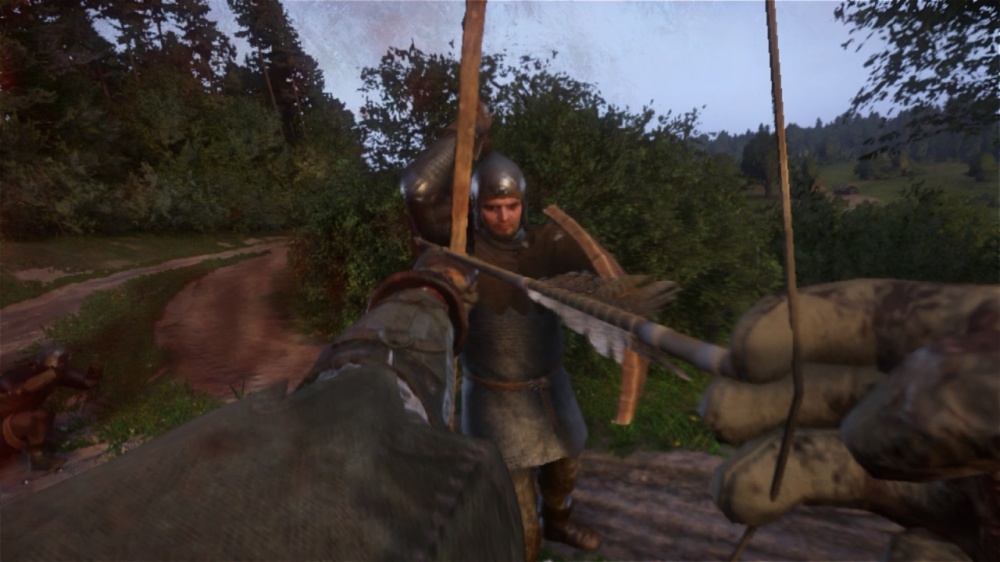Kingdom Come: Deliverance developer discusses Switch’s latest “miracle” port
Even though Switch has been around for over seven years, “miracle” ports for the system are always a topic of conversation. Many games that may have been thought impossible for the console have made their way over, ranging from The Witcher 3 to Doom Eternal.
Kingdom Come: Deliverance is now the latest port to have arrived on Switch. Despite being a game that can be taxing on even more powerful consoles, Warhorse Studios – in partnership with Saber Interactive – managed to make a version for Nintendo’s platform that is overall pretty admirable. We recently spoke with lead programmer Anton Vasilev to talk about what the development process was actually like.
It goes without saying that changes were needed in order to get Kingdom Come actually running on Switch. Vasilev told us that the port “posed significant technical challenges, particularly regarding graphical optimizations.” Vasilev mentioned how the clothing and armor options are very intricate, and “any substantial reductions in model geometry risked compromising the intricacies of these systems.” Because of this, the team “deliberately chose to preserve the integrity of human models without altering their geometry.” However, doing so “presented limitations in reducing the geometry of static models, as maintaining consistency between high-poly NPC models and low-poly environments was essential for visual cohesion.”
Going more into the changes that were necessary, Vasilev shared the following with us:
Despite these constraints, we capitalized on the stability of our game assets, which remain static and immutable, enabling us to manually fine-tune various aspects of the game. This involved adjusting the complexity of physics calculations for individual objects and NPCs, optimizing performance configurations for specific cutscenes, and tailoring optimizations for different clothing and armor sets across diverse in-game locations. Additionally, we streamlined animations wherever feasible, effectively reducing unnecessary overhead.
Certain game systems, such as grass simulation and facial/clothing animations, demonstrated improved performance when shifted from CPU to GPU processing. Furthermore, our development team implemented countless subtle optimizations within the codebase to enhance CPU performance and minimize memory consumption.
In essence, while developing the game for the Switch presented formidable technical hurdles, our strategic approach to graphical optimizations, asset stability, and targeted performance enhancements enabled us to deliver a compelling gaming experience on the platform.
Vasilev also spoke with us about the actual challenges of the Switch version. For one thing, adapting an open-world for a portable device “required meticulous attention to performance optimization.” The use of CryEngine “added another layer of complexity, demanding careful resource management and coding finesse.”
Vasilev said that Switch has its fair share of technical limitations, “including its comparatively modest CPU power and constrained memory, presented further hurdles. Balancing CPU load against memory consumption became a delicate juggling act throughout the development process.”
The team employed different strategies to make the Switch version possible. According to Vasilev: “Some CPU-intensive calculations were pre-computed and stored, alleviating real-time processing demands but increasing memory usage. Conversely, memory-intensive operations were optimized to minimize their footprint, often at the expense of increased CPU utilization.”
We also heard that “achieving a seamless gameplay experience on the Switch necessitated a constant focus on striking the right balance between performance, memory usage, and overall game quality. This pursuit of equilibrium remained a central theme guiding our development efforts from inception to release.”
As some players are aware, Kingdom Come: Deliverance targets 30 frames per second on Switch – but there can be drops. The resolution maxes out at 720p, though it can dip to 540p. Vasilev said the balance “ensures a smooth and enjoyable gaming experience while maximizing visual fidelity within the hardware constraints of the Switch.”
Some had concerns about how Kingdom Come would perform on Switch given how it’s faired on other platforms. Vasilev pointed out that “while we’ve dedicated ourselves to optimizing the game, we’re not magicians – just diligent engineers and testers.” That means drops are possible, and some scenes may take a hit to visual clarity. But the team “poured their expertise and effort into making the game as playable and enjoyable as possible on the Switch.”
With a new Nintendo console seemingly on the horizon, some have felt that game companies would be better off holding back on certain Switch ports. However, Vasilev doesn’t regret waiting to bring Kingdom Come: Deliverance over now. He had this to share with us:
“We thrive on challenges as they push us to improve and innovate, making the journey all the more rewarding. Moreover, it’s a source of enjoyment for our team. Interestingly, some of our team members began their programming and game development journey on platforms like the ZX Spectrum, so the Nintendo Switch is akin to a supercomputer in comparison, reinforcing our enthusiasm for tackling its constraints head-on.”
Vasilev said that, ultimately, bringing Kingdom Come: Deliverance to Switch “has been a source of pride for us” and the team is “delighted to have played a part in expanding the reach of this remarkable game and contributing to its ongoing legacy.”

